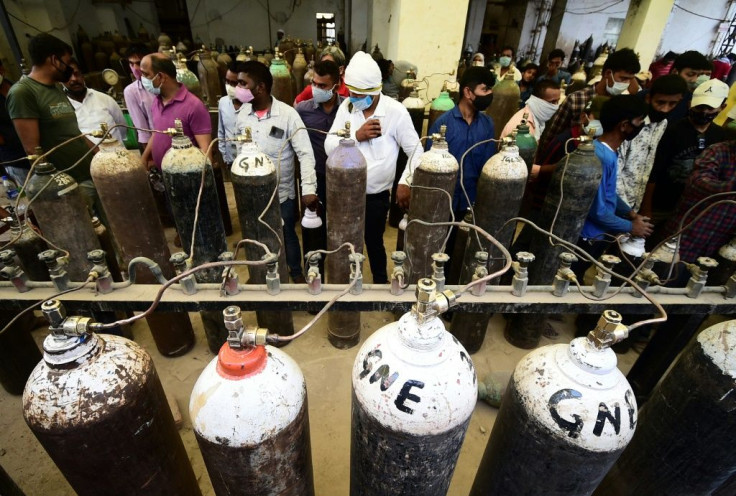How Dangerous Is The B.1.617 Coronavirus Variant? Here's What We Know
KEY POINTS
- The B.1.617 variant is said to be driving India’s deadly COVID-19 second wave
- E484Q and L452R mutations together making the B.1.617 variant more dangerous
- The variant has been detected in at least 17 countries
The B.1.617 variant of coronavirus is said to be behind the unfolding catastrophe in India, a country of more than 1.3 billion people, resulting in overwhelmed hospitals and crematoriums. Experts say that this variant has a so-called double mutation that contributed to an unprecedented surge of COVID-19 cases across India.
What is concerning is that the World Health Organization (WHO) earlier this week said that this coronavirus variant has been found in at least 17 countries, including the U.S., U.K. and Singapore. The UN health agency in its weekly epidemiological update Tuesday listed B.1.617 as a “variant of interest” but not as a “variant of concern” as of now.
The WHO’s technical lead officer on COVID-19, Maria Van Kerkhove, told reporters Friday that "having two of these mutations which have been seen in other variants around the world is concerning." She added that the mutations were similar, increasing the virus' spread and hit neutralization, possibly affecting the ability of vaccines to prevent them from growing.
So how concerned should you really be? Is this double mutant virus primarily responsible for the massive rise in COVID-19 cases in India? Are there any new symptoms related to this particular variant? Let’s take a look:

What Is the B.1.617 And Why Is It Called Double-Mutant Virus?
The B.1.617 contains two mutations, E484Q and L452R. Both are separately found in several coronavirus variants, but they have been reported together for the first time in India. The variant was first reported by a scientist in India in 2020 and more details were presented before the WHO earlier this week, Kerkhove said, Mint reported citing Bloomberg.
What Makes the B.1.617 Dangerous?
The E484Q and L452R mutations, already in circulation across the world, have merged for the first time, making this variant more infectious and dangerous. These two are found in the virus’s spike protein, which helps the virus to attach itself to the human cell’s receptors and attack the organs.
The E484Q mutation is similar to E484K, a mutation found in the U.K. and South Africa variants of coronavirus. On the other hand, the L452R mutation was found in rapidly spreading variants in California.
Does B.1.617 Pose More Severe Threat?
There is not yet enough clinical evidence to ascertain how many people exactly have been infected by this double mutant virus, or how fast it is circulating.
The WHO said that the B.1.617 has a higher growth rate than other circulating variants in India, suggesting potential increased transmissibility, but added that other variants present were also showing increased transmissibility. It said further studies into the characteristics of B.1.617 and other variants are urgently needed.
Meanwhile, amid India’s uncontrollable second COVID-19 wave, its South Asian neighbors are on high alert, which has resulted in sealed border and travel bans, CNN reported.
© Copyright IBTimes 2025. All rights reserved.





















